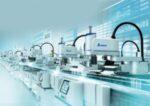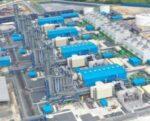SPS – Smart Production Solutions Guangzhou to open on 25 February
Guangzhou, 18 February 2025. SPS – Smart Production Solutions Guangzhou 2025 opens next week, from 25 – 27 February, in Area A of the China Import and Export Fair Complex. Since its debut in 2010, the exhibition has grown into a leading trade platform for intelligent manufacturing and automation solutions in China. As part of the international SPS network, it maintains the professional standards set by its sister show, SPS – Smart Production Solutions in Germany, supporting the technological transformation of the manufacturing industry through its showcase of advanced automation and intelligent manufacturing solutions. A well-established fixture of South China’s manufacturing sector, SPS – Smart Production Solutions Guangzhou continues to receive strong support from industry stakeholders, extending its influence from Guangdong Province to South China and Southeast Asia. The event showcases a wide range of intelligent and automated technologies, including sensor technologies, drive systems and motion controls, mechanical infrastructure, control technologies, industrial software, and connectivity technologies. Other key focus areas include industrial robots, project integration and services, industrial communication, intelligent equipment and system integration, human-machine interface devices, factory automation, automotive manufacturing and more. The 2025 edition will bring together 250 leading exhibitors in intelligent manufacturing, from both domestic and international markets. Highlighted exhibitors include Autonics, Binder, Bonfiglioli, Controlway, Datalogic, DEGSON, DINKLE, GSK, HIKVISION, HUALONG XUNDA, ifm, INVT, Jaten Robot, Li-Gong, MatriBox, SUPU, Wanjie, WATTSAN, Zhongda Leader and more. Strong international presence alongside regional innovation As a sister event to SPS – Smart Production Solutions in Nuremberg, Germany, in addition to continuing their close cooperation, the Guangzhou show connects with the broader international SPS network to bring world-class industry resources and knowledge to South China’s manufacturing sector. An international pavilion, organised in cooperation with SPS Italia, will showcase advanced technologies from global manufacturers, while exhibitors from Germany, Japan, South Korea and […]










